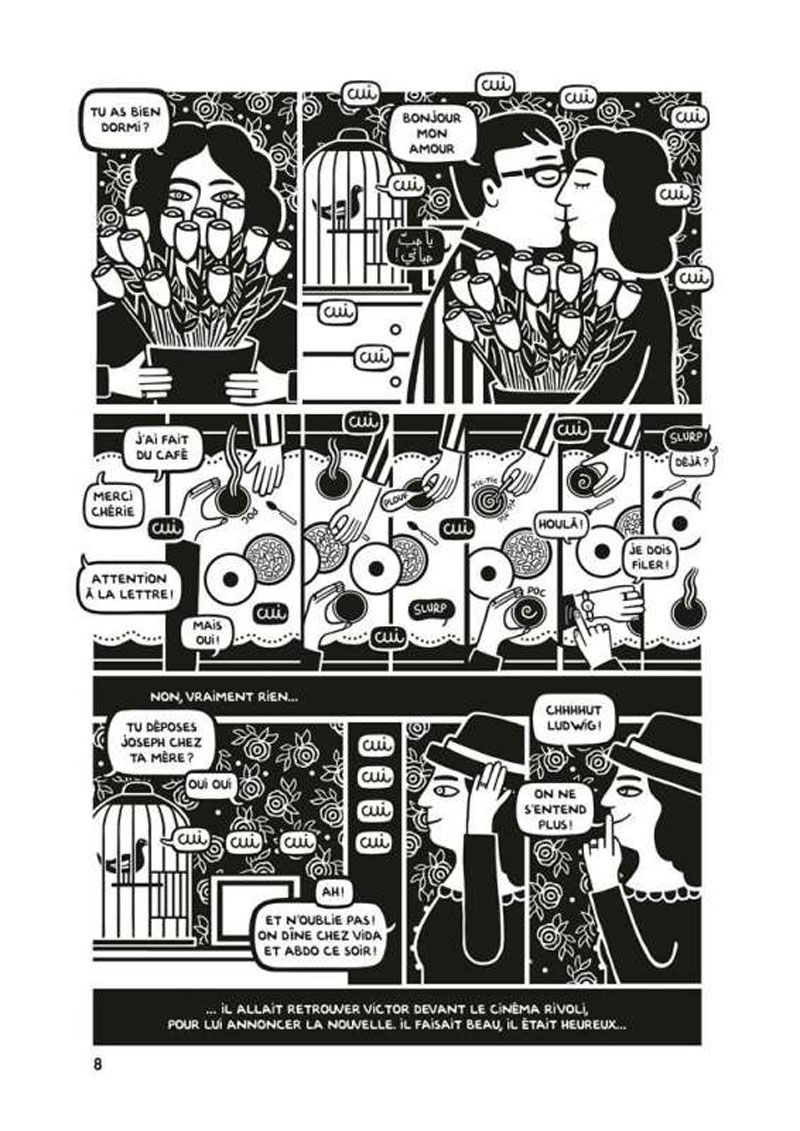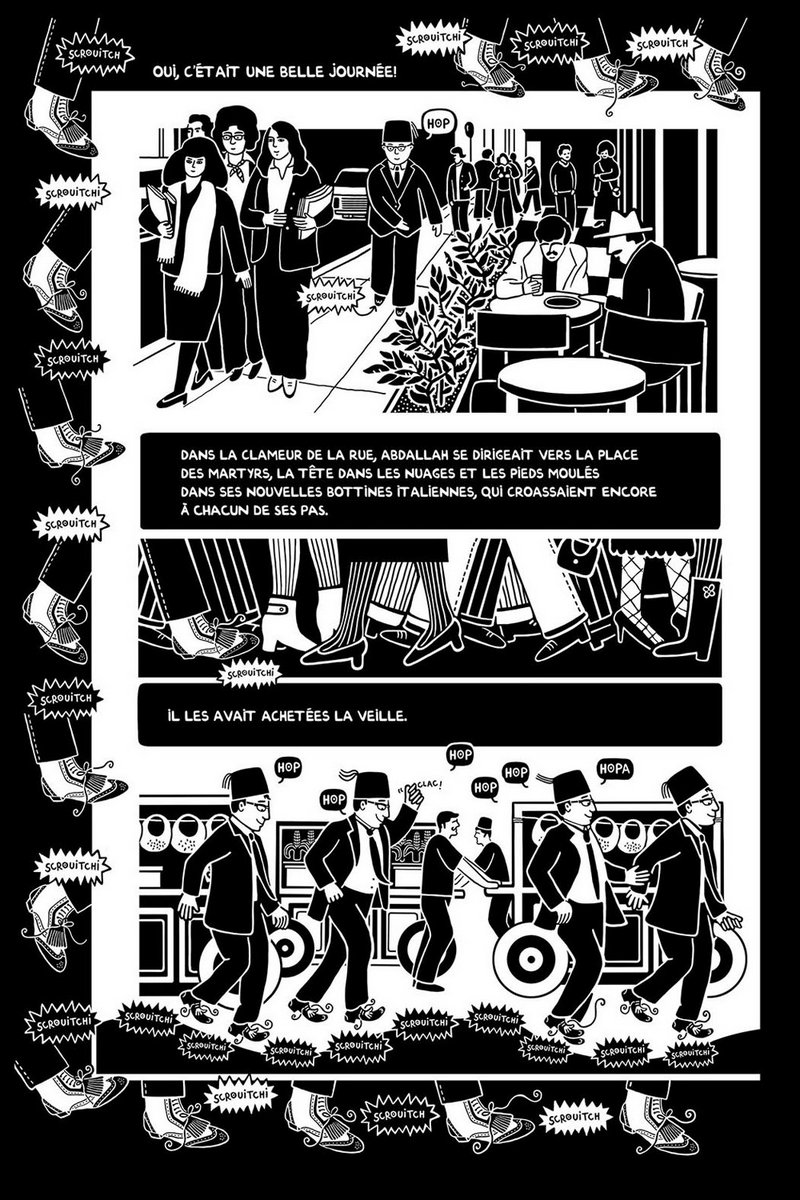Zeina
Abirached was born in 1981 in Beirut, Lebanon in the heat of the Lebanese Civil
War (1975-1990). Now an artist, illustrator, and author, Abirached began her
life on what she describes as a “dead end street”, blocked on one end by sandbags,
infested with snipers, and riddled by bullet holes. (Abirached, 2015). When the
war that marked the first ten years of her life ended abruptly in 1990,
Abirached was shocked by the lack of memorials and evidence that testified that
the war had ever taken place (Lang 2016). After studying at both L’académie
libanaise des beaux-arts in Beirut and L’École nationale supérieure des arts
décoratifs in Paris (Abirached, 2015), Zeina was inspired by her past to create
a tangible memory of her childhood and the Beirut she once knew (Lang, 2016).
Growing up reading Franco-Belgian graphic novels such as Tintin, Abirached naturally chose the medium of the graphic novel
to create a beautiful representation of her country, her past, and her emotions
(Abirached, 2015).
Above: Abirached shows a piece to the audience during a lecture
Above and below: Abirached's conception of the division of Beirut in Le Jeu Des Hirondelles
Abirached’s illustrations also often utilize repetition, symmetry, and
geometric concepts that force the reader to focus on minor differences in the
characters’ positioning and body language (Szép, E., 2014). This helps to incorporate
the reader in the visual experience of the novel and understand the importance
of human figures in her work. This repetition also creates a sense of stillness
and waiting that characterized much of her youth. Her wide panels often have
multiple storylines and subplots developing simultaneously (Le Jeu des Hirondelles, 2008). This
technique combined with the geometric layout of her pages creates a sense of
each page becoming its own piece of art rather than a series of panels meant to
convey a plotline. In this way, the illustration is equally as important as the
textual content, pushing the definition of a graphic novel.
Above: Example of Abirached's use of repetition in her novel Le Piano Oriental
Abirached has also mastered the visualization of sound
in her novels. Seldom using long speech bubbles within her illustrations, sound
is an integral part of her novels that brings the black and white pages to life
and helps to immerse the reader. In particular, in her latest novel Le Piano Oriental (2015), Abirached uses
sound as a vehicle to describe the fusion of French and Lebanese through visualized
sound, taking a traditional, Western instrument and making it capable of
creating traditional Lebanese music (Abirached 2, 2015). She painstakingly
finds ways to convey to the reader the cultural significance and difference
between different types and origins of sounds, using visual sound to create
worry, joy, discomfort, and a myriad of other emotions in all of her works.
Above: Abrichad's visualization of sound in Le Piano Oriental
Despite her growing success, Zeina Abirached remains humble and
continues to develop as an artist and author. While a skilled artist, she notes
that many times she struggles to draw specific concepts and that these
struggles inspire creative ways of representing things differently (Abirached
2, 2015). To date, Abirached has published six novels in French including such
works as Beyrouth Catharsis (2006)
and Je Me Souviens (2009). Some have
been translated to English, but many await translation. Her novels and art
usually focus on the themes of childhood, war, personal and public narratives,
and the evolution and revision of culture. Some of her numerous awards include the
Middle East Book Award, the Notable Books for a Global Society Award, and the YALSA Great Graphic
Novels for Teens award. Abirached has also released one short animation that
was nominated for the fifth international film festival in Tehran, also
inspired by her childhood.
Above: Abrichad represents her conception of the mixing of Arabic and French language and sounds
Personal Notes
As an artist, I am enthralled by how Abirached masterfully delivers complex concepts in simple techniques. Without shading, much line weight, or even realism, she manages to convey both the visual and emotional experience of her childhood beautifully. Her monochromatic style is one that I enjoy experimenting with, and her re-imagination of the form of the graphic novel in a contemporary setting is intriguing. Above all else, her representation of body language and facial features in her portraiture is formidable. She is able to capture multiple facets of expression and personality in simple representation; a skill I would like to acquire. After hearing her speak about her art during my first semester, I am excited to have the opportunity to explore her works further.
Works Cited:
Abirached, Z. (2008). Mourir, partir, revenir: Le jeu des hirondelles. Paris: Editions Cambourakis.
Abirached, Z. (2015). Artist's Statement. European Comic Art Europ Comic Art,8(1), 69-86.
Abirached, Z (2016). Le Piano Oriental. Paris: Edition Cambourakis
Lang, F. (2016). The Lebanese Post-Civil War Novel: Memory, Trauma, and Capital (Vol. 3). (141-168).
Szép, E. (2014). Graphic Narratives of Women in War: Identity Construction in the Works of Zeina Abirached, Miriam Katin, and Marjane Satrapi. International Studies. Interdisciplinary Political and Cultural Journal, 16(1)






No comments:
Post a Comment